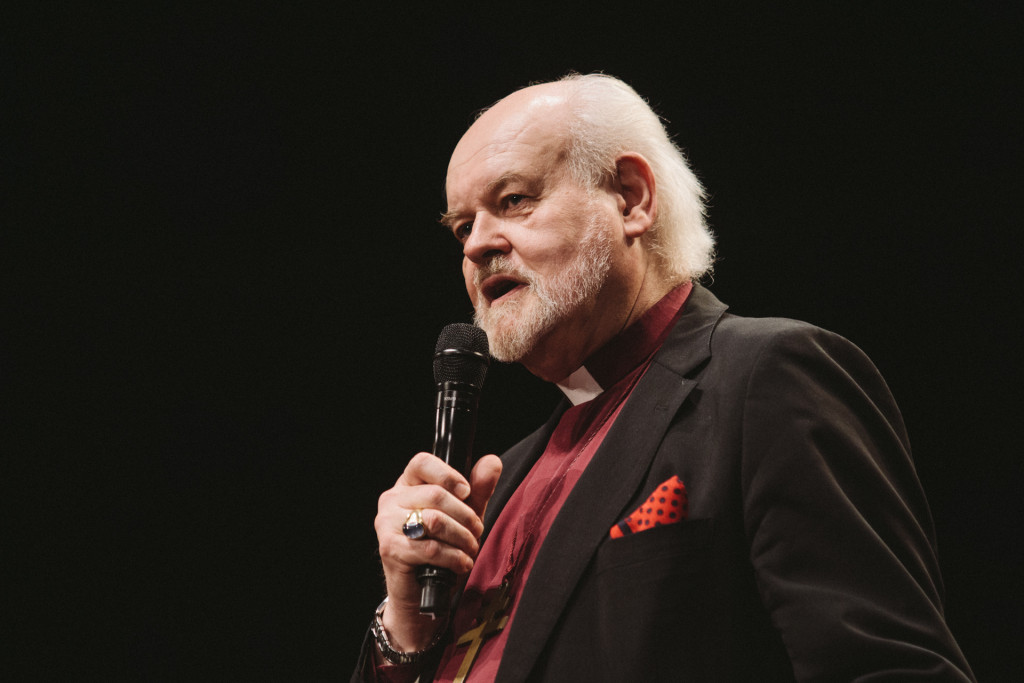
Diocese of London |
Postcard from London
By John Martin
This evening the Diocese of London says farewell to the Rt. Rev. and Rt. Hon. Richard Chartres, its bishop since 1995. St Paul’s Cathedral will host the event. Chartres officially retires on Shrove Tuesday, February 28.
Upon taking office he found a diocese in a downward spiral and almost paralyzed by cumbersome procedures. The bishop leaves it, 21 years on, in a much more confident frame of mind. London is looking to grow rather than retrench. It is one of the few English dioceses experiencing numerical growth.
Chartres tells a story of how early in his tenure he and his wife, Caroline, took a drive around the diocese. He noted with dismay that many congregations in strategic locations had been sold or closed. There seemed to be a view among diocesan leaders, one often expressed in the media, that the church should be relegated to the leisure sector, on the periphery of society.
He had to fight for a more equitable share of national funding in the face of a system that failed to question whether the ministry it supported was effective. Perhaps his most important contribution was helping the diocese to become, in his words, “vision-led, not problem-led.”
Chartres is an imposing figure — well over six feet tall, thickset, with a beard and deep voice — that would look the part for an Eastern Orthodox patriarch. He is proud of his French Huguenot ancestry. He was destined for leadership in the Church of England once he became chaplain to Robert Runcie as Bishop of St. Albans.
When Runcie became Archbishop of Canterbury, Chartres was among the staff that moved to Lambeth Palace in 1980. The historic visit by Pope John Paul II and publication of The Church and the Bomb, both in 1982, were among the notable achievements of Team Runcie. There followed a parish post in London-Westminster and then consecration as Bishop of Stepney to the east of the capital.
Translation to London required a huge step up. It is the third most senior diocese. The short incumbency of Bishop David Hope did a lot to strengthen parishes in a diocese exhausted by the long battle about ordaining women to the priesthood. Chartres had a strategy to stay above controversy. Almost immediately he announced he would only ordain deacons, and the London Area Bishops would ordain priests. It meant that no part of the diocese was a no-go area for him.
Relationships with two parishes, both dedicated to the Holy Trinity, are snapshots of the Chartres effect.
Holy Trinity Sloane Square is in Upper Chelsea, a colorful precinct rich in retail stores, boutiques, and galleries. Very early on, papers arrived on the bishop’s desk with the recommendation that he authorize the parish’s closure. The building is an architectural gem of the Arts and Crafts school. The parish had fallen on hard times and closure was the prevailing consensus among diocesan administrators. Chartres would have none of it. He faced down opponents and sent in Bishop Michael Marshall, under whose leadership the parish took on a new lease of life that continues today.
Holy Trinity Brompton (HTB), located near Harrods, was a thriving parish but very unfashionable in the eyes of many diocesan leaders. “We had a toxic reputation,” Mark Elsdon Dew, the parish’s director of communications, once confided to me. Chartres recognized potential in HTB that could be harnessed for the wider church.
HTB had energy and big plans. It incubated the Alpha Course and rolled it out nationally and internationally. It was ahead of its time in planting churches. It developed a strategy in which people who had drifted into HTB were channeled back into worship communities close to their homes.
HTB held annual church-planting conferences well before the idea caught on elsewhere, and London revived the See of Islington.
For years HTB nursed an ambition, which Chartres encouraged, to launch a theological college. St. Mellitus College is a joint venture with the diocese that has the largest enrolment of any Church of England college.
Chartres will be a hard act to follow. The Crown Nominations Commission is scheduled to discuss the vacancy in September and again in November. February is the likely time date when his successor will be announced.









